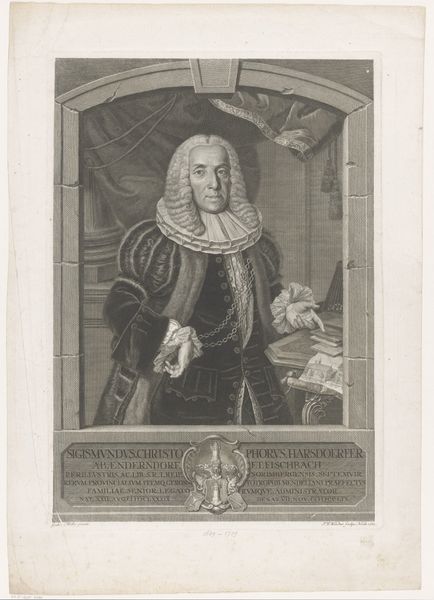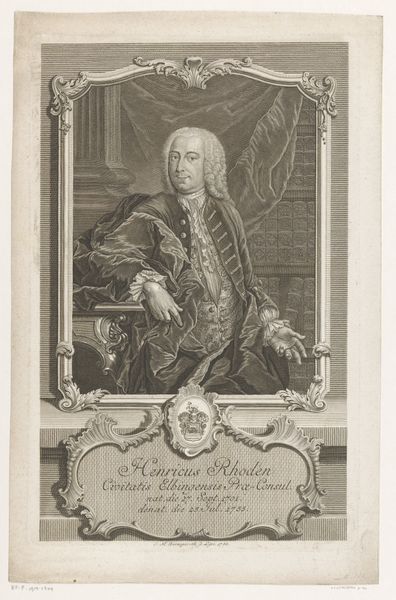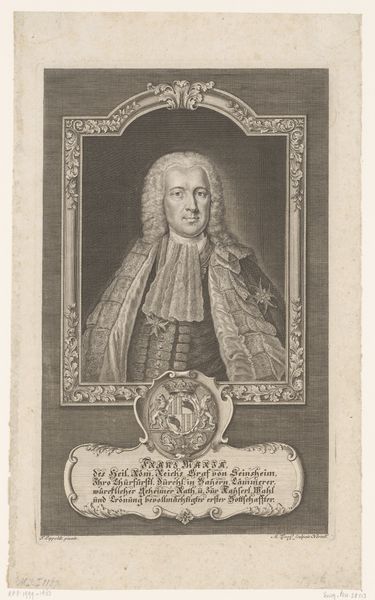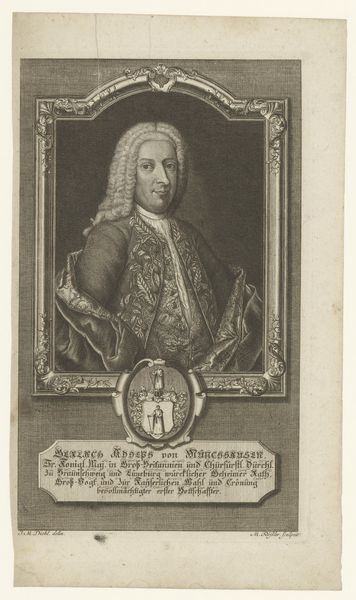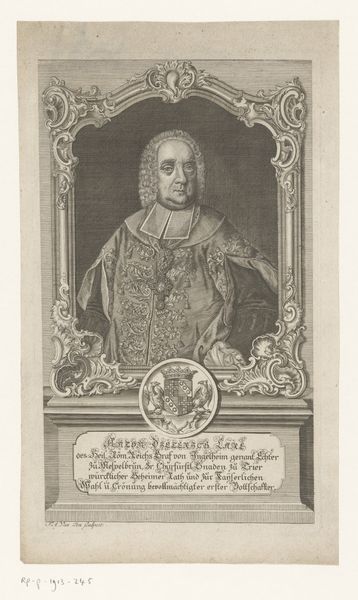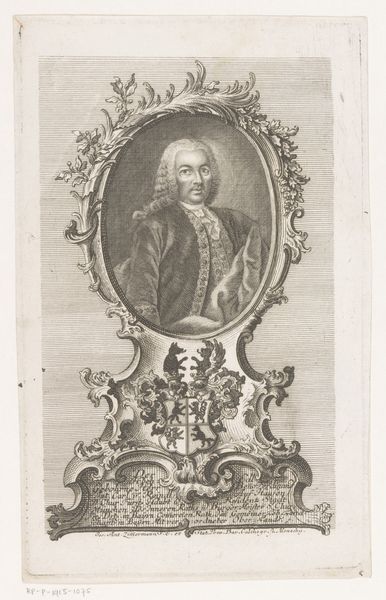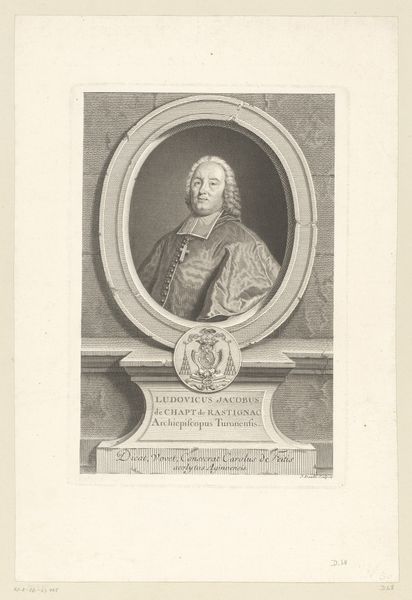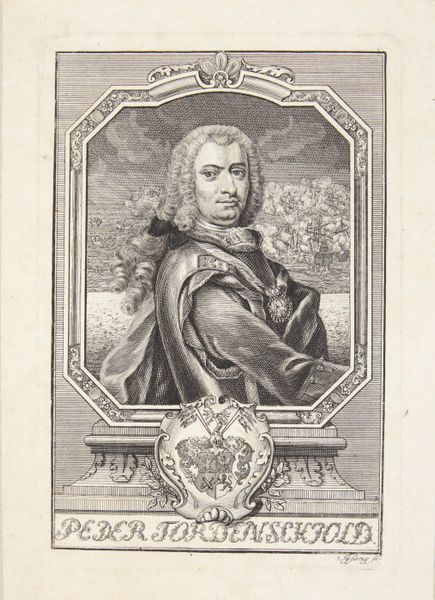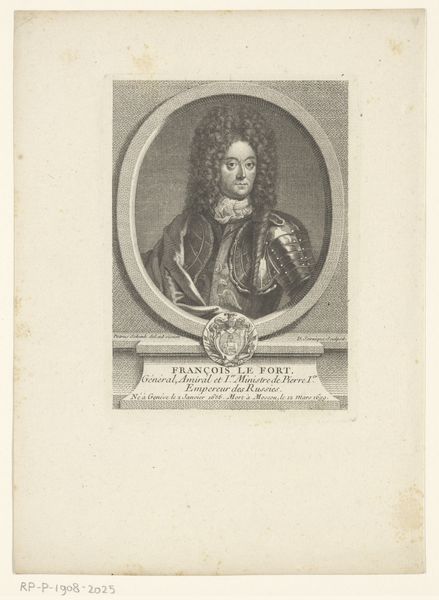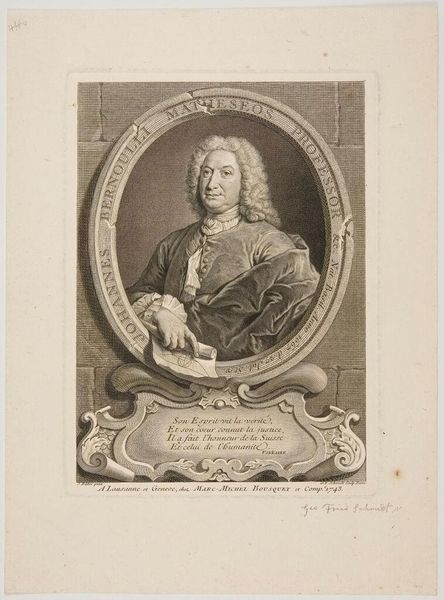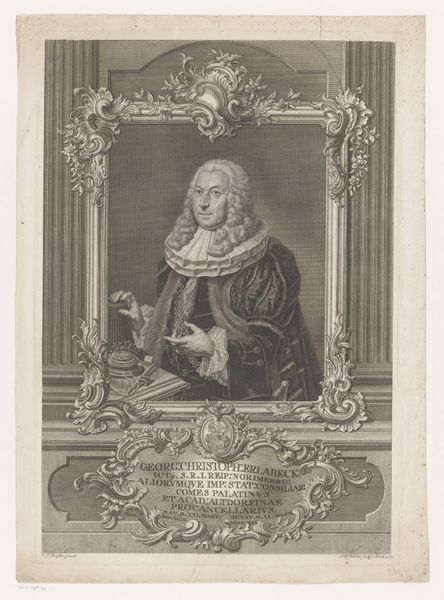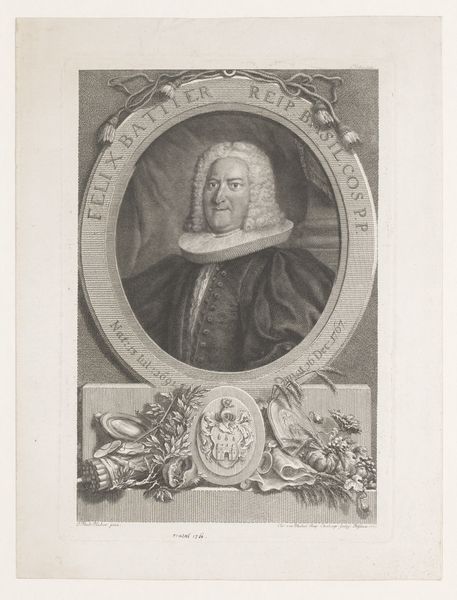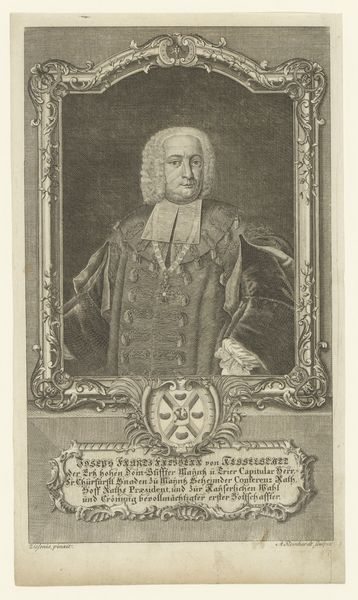
print, engraving
#
portrait
#
baroque
# print
#
line
#
history-painting
#
engraving
Dimensions: height 390 mm, width 263 mm
Copyright: Rijks Museum: Open Domain
Editor: We are looking at a print from 1754, titled "Portret van Johann Albrecht Rieter von Kornburg" by Johann Wilhelm Windter, currently held at the Rijksmuseum. It’s quite ornate; the details in the engraving are so intricate, from the subject's clothing to the architectural frame around him. What stands out to you when you look at the piece? Curator: Formally, the arrangement of elements contributes significantly to the artwork's overall impact. Observe the contrast between the dark, shadowed areas of the background drapery and the brightly illuminated figure of Johann Albrecht. The artist strategically manipulates light and shadow to create depth and volume. Editor: I see that. It’s like he's emerging from the shadows. The clothing and helmet almost feel separate, too. Curator: Precisely. Consider also the dynamic interplay between the geometric rigidity of the architectural frame and the more organic contours of the figure. This juxtaposition establishes a visual tension, engaging the viewer's gaze. Do you notice how the textures and patterns contribute? Editor: I do, now that you mention it. The smooth armor versus the fur trim of his robes. And what about the choice of a monochrome palette? Curator: The absence of color encourages a focus on form and texture, emphasizing the linear qualities of the engraving technique itself. It is a deliberate choice which enhances the detailed articulation. These technical choices, considered together, underscore its aesthetic effect. Editor: I never thought about it that way, as deliberate choices. It all feels more interconnected now. Curator: Exactly. Each element serves a formal function, contributing to the overall aesthetic architecture of the artwork. These choices can have powerful visual effects.
Comments
No comments
Be the first to comment and join the conversation on the ultimate creative platform.
